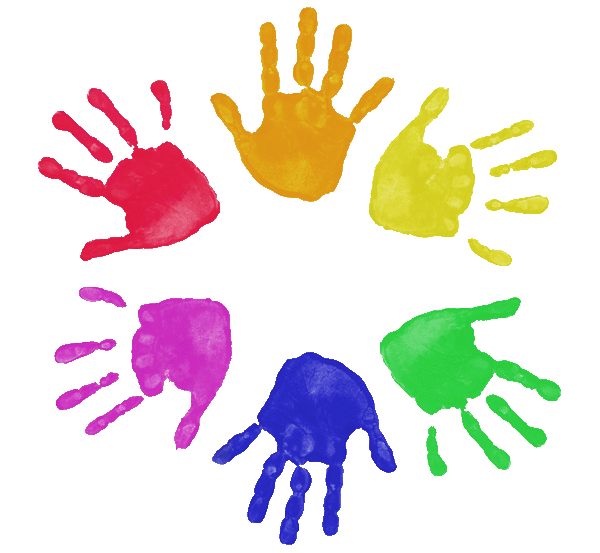Sensory Processing
The following represents both typical and atypical development for children ages birth to 3 years old. If you observe more behaviors from the atypical list than from the typical list, you may wish to have your child evaluated by a pediatric Occupational Therapist.
FROM BIRTH THROUGH 12 MONTHS
Typical: The baby…
- After six weeks of age has a fair, well-established sleep cycle. Sleeps all night by six months.
- Likes to be held and snuggles with adult by molding body to that of the adult holding him or her
- Has good eye contact and smiles and laughs
- Is comfortable when being moved
- Has favorite songs or movement games, and anticipates these special interactions.
- Explores toys by putting them in mouth
- After six months accepts solid and textured foods when introduced
- Can attend to more than one stimulus at a time. Can look at a book while listening to a story
- Has favorite sensory stimuli, such as certain music, finger games, flavors, etc
- Plays using two hands in the middle. Transfers toys hand-to-hand
Concerns: The baby…
- Has not developed predictable sleep/waking cycles; is frequently difficult to calm or get to sleep.
- Arches or attempts to pull away when being held
- Poor eye contact and does not respond to smiles or laugh
- Becomes irritable when moved or position is changed
- Prefers to stay in one position
- Avoids novel play situations or interaction with others
- Avoids mouthing toys
- Has difficulty with solid or textured foods, “picky” eater
- “Tunes out” if more than one stimulus is presented
- Caregivers have difficulty determining baby’s preferences
- Uses just one hand at a time (after 8 months)
- Does not creep on hands and knees, but may scoot on bottom or tummy
FROM 12 TO 18 MONTHS
Typical: The toddler…
- Enjoys touching textures; plays with food, textured toys, sand, play-doh, etc.
- Enjoys bath time and accepts touch from washcloth. Accepts clothing moving against skin during diapering and dressing.
- Plays in imaginative and unique ways.
- Spends time exploring the various features of toys (the sights, sounds, texture, etc.)
- Understands simple directions without gestures, listens and looks when spoken to.
- Accepts various clothing textures. Accepts clothing that is appropriate to the weather.
Concerns: The toddler…
- Avoids finger feeding, touching textured toys, messy hands.
- Is excessively upset by dressing and diaper changes or by bathing.
- Is “stuck” in play, continues to mouth, bang or throw toys repeatedly.
- Has short attention to new toys, does not independently explore toys’ properties.
- Has poor eye contact: Makes inconsistent responses (actions) when spoken to.
- Is fussy about clothing textures. Avoids wearing shoes, OR insists on wearing shoes on all textured surfaces such as carpeting or grass. Insists on heavy clothing during hot weather, OR avoids clothing, even in cold weather.
- Noises such as thunder, sirens, vacuum cleaners are frightening
- Is frightened of swinging or seeks out a lot of movement, in constant motion
- May seek out a lot of pressure through hugging tightly or crawling under sofa cushions
FROM 18 TO 36 MONTHS
Typical: The toddler/child…
- Adjusts play to the situation, active play outdoor lay vs. structured, quiet play inside.
- Explores new play equipment, with good balance and body control
- Can remain focused on a task despite a moderate level of activity in the room
- Is able to participate in simple group activities: Understands the sequence of changes in group activities. Is able to understand turn taking.
- Is comfortable with trying new things, or changes in routines.
- Is able to tolerate moderately loud noises, and unusual environmental stimuli.
- Accepts tooth brushing, bathing, and grooming, unless distracted by play.
Concerns: The toddler/child…
- Has an intense need for constant movement such as jumping, rocking, swinging; Can’t sit still. OR is overly fearful of movement.
- Has difficulty getting on and off play equipment, or is clumsy. Avoids new movement play situations. Does not want feet off the ground.
- Is easily distracted by sights and sounds.
- Seems to get lost in group activities. Is unable to take turns, even with adult assistance.
- Becomes upset if routines and plans are changed.
- Is upset by loud noises. Can hear distant sounds that others do not hear. Has unusual responses to light, smells, or other sensory experiences.
- Has poor tolerance of grooming such as hair combing or shampooing, tooth brushing
